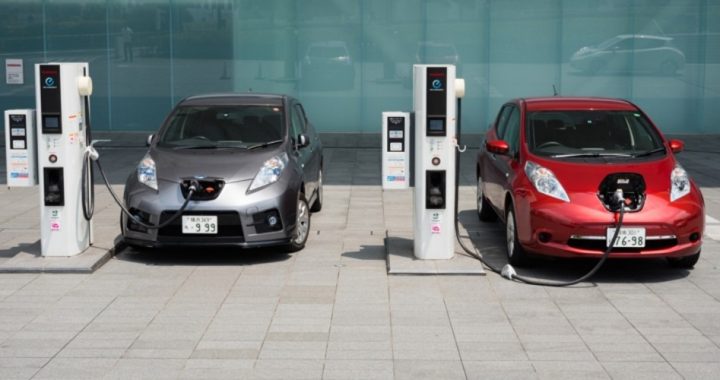
In the past few years of heavy marketing and media attention in the form of favorable media coverage that amounts to a combination of free advertising and incessant pressure, one would expect that the electric car market would have taken off. It hasn’t, though. It survives on government handouts.
In fact, in areas without heavy-handed government pressure, less than one percent of new cars sold are electric, according to a report by Reuters last September. That report also said that the Norwegian island of Finnøy has the highest density of electric cars anywhere in the world — where about one in five cars is electric. The article gives a good reason for those numbers: Those driving electric cars are exempt from the $6,000-a-year toll charges for the tunnel to the mainland. So over the life of the car, those traveling back and forth to the mainland may wind up actually profiting from buying a car they would not likely have otherwise elected to purchase.
In other words, those electric cars are actually paid for not by the owner, but by those who do pay the $6,000-a-year toll charges and higher taxes that go to line the pockets of electric-car buyers. Far from being an endorsement of the joys of electric car ownership, this proves that in the absence of government handouts in the form of tax and toll breaks, the electric-car market would die of natural causes.
And while Norway is an extreme example of that principle, it is perhaps the perfect example. As the article explains, “State subsidies support sales of electric cars around the world, and Norway has the most electric cars per capita thanks to the most generous handouts. It offers nationwide tax breaks for users of electric cars that can be worth tens of thousands of dollars, plus various local incentives like exemptions from road tolls and parking fees.”
Former Norwegian central bank governor Svein Gjedrem put it this way: “Economic incentives work, especially if they are very, very, very strong as in Finnøy.” What this means is that when the free market rejects a product — in this case, an overpriced, under-performing car that has higher maintenance costs, a vastly limited range, and requires hours of charge before being able to travel that limited distance — the Big Government answer is to use taxpayer funds to artificially prop it up.
The reality is that the electric-car market is driven by an economy of confiscatory taxes — theft — and not by genuine market demand. To illustrate that, look at what happens when a nation or state has — in the words of former British Prime Minister Margaret Thatcher — “run out of other people’s money” to use to bribe people to purchase electric cars. Norway is already experiencing this and is dialing back the subsidies. Sales are beginning to slow. When Denmark cut subsidies for electric cars last year, the result was telling: Sales of Teslas dropped from 2,738 the year before to an anemic 176. Those 176 people apparently didn’t get the memo. And closer to home, the U.S. state of Georgia saw sales of the Nissan Leaf (shown) dry up immediately after dropping the $5,000 tax break in 2015.
All of this would be hard enough to justify if at least electric cars could deliver on any of the promises that are made about them. After all, climate alarmists in media and government have promised that electric cars will lower pollution and help save both the Earth and humanity. In reality, though, the opposite is true. As this writer reported in a previous article, the processes involved in both the manufacture and disposal of electric cars is much harsher on the environment than that associated with gasoline-powered and diesel-powered cars. The mining of graphite for the manufacture of the batteries is so polluting that even China — where the vast majority of the materials are mined and where no small number of batteries are manufactured — had, as early as 2014, “suspended or closed dozens of graphite mines in an effort to curb the pollution.” And then there is the cost to humanity. As that article stated:
Worst of all, though, is the fact that the electric car industry is built on the backs of child slave laborers. In those pollution-producing mines where the raw materials are harvested, it is children — as young as four — who are paying the real price for “clean,” “green” cars. The Daily Mail reported earlier this month that in cobalt mines in the Democratic Republic of Congo (DRC), 40,000 children work daily to harvest the materials used to produce electric car batteries. The conditions in which these children work can probably best be described as hell on Earth.
All of this to produce and sell a product that few people will buy unless it is wrapped in government handouts. Unfortunately, the real price of electric cars is a mystery that likely will remain unknown. Because that price includes a complicated system of subsidies, tax breaks, environmental damage, illness and death of child slaves, and other factors impossible to measure. What can be known for sure, though, is that the electric-car market is not demand-driven; it is supply-forced. The proper word for that is “racket.”
This really illustrates the difference between those who value a free market where innovation is driven by competition and market demand, and those who — because of greed and avarice — prefer a government-driven market based on principles that would once have been immediately recognized as socialist. The one produces what people actually want and spurs success and prosperity; the other forces an unwanted, inferior product and creates failure and poverty — for all but a few.
Whatever the rest of the world may choose to do, freedom-loving Americans should demand that governments at every level — federal, state, and local — stop subsidizing businesses. Let the market decide what succeeds and what fails. It is the only way to genuine prosperity.
Photo: joel-t via iStock / Getty Images Plus




